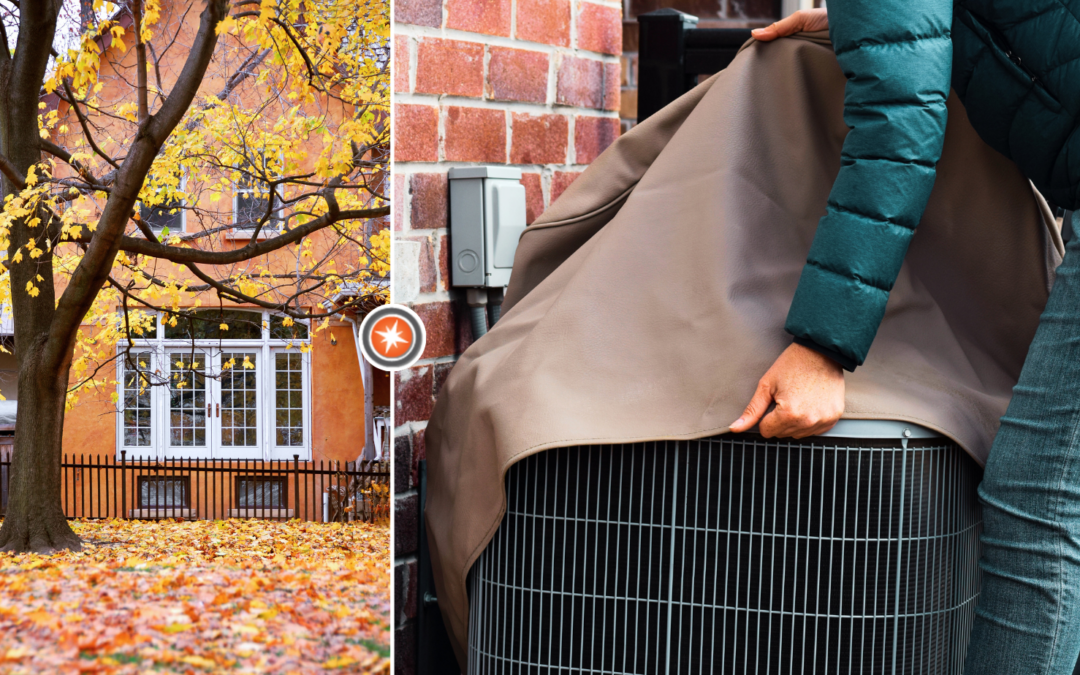It’s time to prepare your property for fall and colder weather! As autumn leaves create a colorful carpet in our yards and the evening chill becomes more prominent, many on the East Coast are switching their HVAC systems to heating mode. With the heart of the fall season upon us, it’s the ideal time to set preventive measures in motion, ensuring our homes and properties are ready for the colder months ahead.
Whether you’re managing a community or just looking to prepare your own home, this guide is tailored for you. We’ve outlined essential do’s and don’ts, emphasizing water damage prevention, disaster planning, and mold remediation, to make your transition into winter seamless and hassle-free. Dive in and discover how to make the most of this season’s preparations!
DO’s:
Start Outside with Fall Clean-Up
- Remove fallen leaves from grassy areas.
- Clear gutters of leaves and debris.
- Ensure exterior drains and downspouts are free from clogs.
- Power wash algae off sidewalks, siding, and decking.
- Inspect your roof for damage or missing shingles.
- Store summer tools and equipment properly.
Check Exterior Systems
- Remove debris from HVAC units and fire hydrants.
- Winterize your exterior plumbing.
- Review exterior lighting and plan repairs for nonfunctional ones.
Prepare the Property Interior
- Test your heating system early in the fall.
- Change HVAC filters.
- Insulate pipes and ensure none are exposed.
- Review your electrical system.
- Clean dryer vents and check dryer functionality.
- Inspect and clean fireplaces or chimneys if present.
Conduct a Safety Check
- Replace batteries in smoke and carbon monoxide detectors.
- Identify and address fire hazards immediately.
- Ensure entry points are sealed to prevent pest infestations.
Stock Winter Supplies and Tools
- Know the difference between rock salt and ice melt.
- Have tools like shovels, snow blowers, and ice scrapers on hand.
- Check these tools for rust or wear.
Update Your Disaster Plan
- Clarify team roles during winter weather events.
- Establish contracts with emergency service providers.
- Update utility company contact information.
- Refresh supplies in your emergency kits.
Communicate with Stakeholders
- Inform staff about inclement weather plans.
- Check vacant units for heating system status.
- Distribute cold-weather reminders and checklists to residents.
- Inform staff about snow and ice removal responsibilities.
- Emphasize the importance of floor mats and “Wet Floor” signs.
DON’Ts:
Neglect Water Damage and Mold Remediation
- Leaving leaves and debris can cause water damage and mold issues.
Ignore Disaster Planning
- A lack of planning can result in exacerbated damage during winter events.
Overlook Communication with Residents and Staff
- Ensuring everyone is informed prevents accidents and mismanagement.
If you follow these guidelines, you’re on the right track for a smooth transition into winter. Remember, preparation is key to avoid issues like water damage, mold remediation, and ensure efficient disaster planning. Stay safe and let us know if you need further guidance on Disaster Planning and Winter Preparedness.
Interested in more information? Let’s chat! CLICK HERE to contact us.

